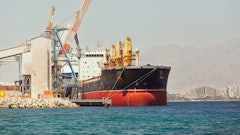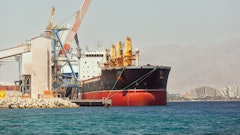
The dry bulk and LNG segments have borne the brunt of restricted transits, according to recent research from Container xChange. In contrast, liner shipping has faced minimal consequences from transit reductions but has been significantly affected by draught reductions.
“The dry bulk and LNG segments have experienced the greatest impact due to restricted transits, primarily because they don't adhere to a fixed liner schedule but instead ‘arrive at the canal on an ad hoc basis.’ In contrast, liner shipping has faced minimal consequences from transit reductions but has primarily been affected by draught reductions. The maximum draught has been decreased from 50 feet to 44 feet, with each foot reduction in draught resulting in a ‘loss’ of 400 TEU capacity. Consequently, an average container vessel can now transport 2400 TEU less,” says Christian Roeloffs, co-founder and CEO of Container xChange.
“At present, container shipping trade flows remain unencumbered. However, anticipating increased pressure on the U.S. east coast, the Suez Canal and the Cape Horn in the coming months, shippers are likely to explore alternative routes to circumvent potential disruptions,” adds Roeloffs.
Key takeaways:
- The immediate impact includes a halved number of vessels passing through the canal, resulting in shipping companies re-routing vessels, blank sailings, longer transit times, and potential higher shipping costs in the coming times.
- The mid- to long-term repercussions of Panama Canal situation will run easily throughout the next year because of the irreversible environmental concerns that will dwindle the performance of the canal in time.
- The ongoing challenges, compounded by the Panama Canal Authority's water conservation measures in response to a drought, have led to prolonged wait times, capacity limitations, and additional strain on shipping schedules. Measures like the restriction of booking slots and adjustments to vessel weight requirements have further elongated waiting times.
- The resulting supply chain disruptions are expected to potentially impact container prices. Heightened competition for available slots has driven up spot freight rates, prompting carriers to re-evaluate pricing strategies to offset increased costs and uncertainties.


























